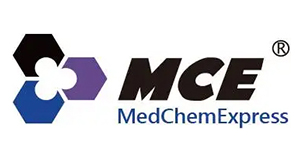Methacholine (chloride), CAS 62-51-1
Methacholine (chloride), CAS 62-51-1
SKU
MEXHY-A0083-10.1
Packaging Unit
10 mM/1 ml
Manufacturer
MedChemExpress
Availability:
loading...
Price is loading...
Product Description: Methacholine (Acetyl-β-methylcholine) choride is a potent muscarinic-3 (M3) agonist. Methacholine choride acts directly on acetylcholine receptors on smooth muscle causing bronchoconstriction and airway narrowing. Methacholine choride shows a high sensitivity to identify bronchial hyperresponsiveness (BHR). Methacholine choride can be used to measure airway hyperresponsiveness (AHR) as a diagnostic aid in the assessment of individuals with asthma-like symptoms and normal resting expiratory flow rates[1][2][3][4].
Formula: C8H18ClNO2
Citations: Aging (Albany NY). 2021 Sep 13;13(17):21729-21742./Mol Immunol. 2023 Aug 31;162:74-83.
References: [1]Cohen J, et al. Relationship between airway responsiveness to neurokinin A and methacholine in asthma. Pulm Pharmacol Ther. 2005;18(3):171-176./[2]Anderson SD, et al. Comparison of mannitol and methacholine to predict exercise-induced bronchoconstriction and a clinical diagnosis of asthma. Respir Res. 2009;10(1):4. Published 2009 Jan 23./[3]Cockcroft DW. Methacholine challenge methods. Chest. 2008;134(4):678-680./[4]Kabara S, et al. Differential effects of thiopental on methacholine- and serotonin-induced bronchoconstriction in dogs. Br J Anaesth. 2003 Sep;91(3):379-84./[5]Folkerts G, et al. Bradykinin causes inhibition of methacholine-induced bronchoconstriction in vivo in mice. Naunyn Schmiedebergs Arch Pharmacol. 2001 Jul;364(1):53-8. /[6]Vitorasso RL, et al. Methacholine dose response curve and acceptability criteria of respiratory mechanics modeling. Exp Lung Res. 2020 Feb-Mar;46(1-2):23-31.
CAS Number: 62-51-1
Molecular Weight: 195.69
Compound Purity: 98.0
Research Area: Others
Solubility: DMSO : 100 mg/mL (ultrasonic)/H2O : 100 mg/mL (ultrasonic)
Target: mAChR
Formula: C8H18ClNO2
Citations: Aging (Albany NY). 2021 Sep 13;13(17):21729-21742./Mol Immunol. 2023 Aug 31;162:74-83.
References: [1]Cohen J, et al. Relationship between airway responsiveness to neurokinin A and methacholine in asthma. Pulm Pharmacol Ther. 2005;18(3):171-176./[2]Anderson SD, et al. Comparison of mannitol and methacholine to predict exercise-induced bronchoconstriction and a clinical diagnosis of asthma. Respir Res. 2009;10(1):4. Published 2009 Jan 23./[3]Cockcroft DW. Methacholine challenge methods. Chest. 2008;134(4):678-680./[4]Kabara S, et al. Differential effects of thiopental on methacholine- and serotonin-induced bronchoconstriction in dogs. Br J Anaesth. 2003 Sep;91(3):379-84./[5]Folkerts G, et al. Bradykinin causes inhibition of methacholine-induced bronchoconstriction in vivo in mice. Naunyn Schmiedebergs Arch Pharmacol. 2001 Jul;364(1):53-8. /[6]Vitorasso RL, et al. Methacholine dose response curve and acceptability criteria of respiratory mechanics modeling. Exp Lung Res. 2020 Feb-Mar;46(1-2):23-31.
CAS Number: 62-51-1
Molecular Weight: 195.69
Compound Purity: 98.0
Research Area: Others
Solubility: DMSO : 100 mg/mL (ultrasonic)/H2O : 100 mg/mL (ultrasonic)
Target: mAChR

 Deutsch
Deutsch










